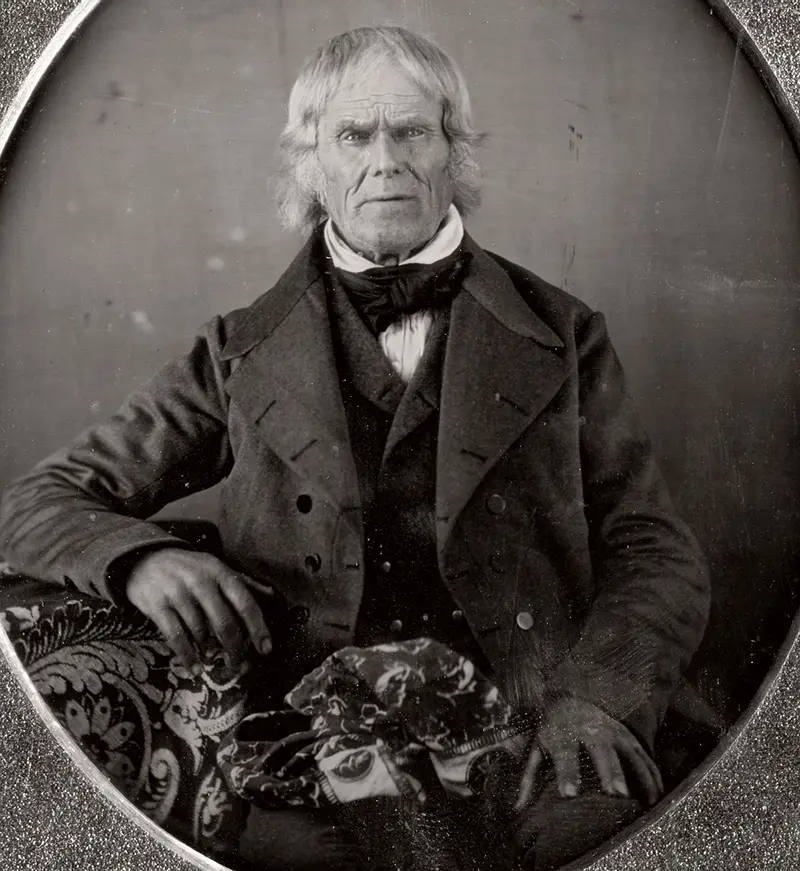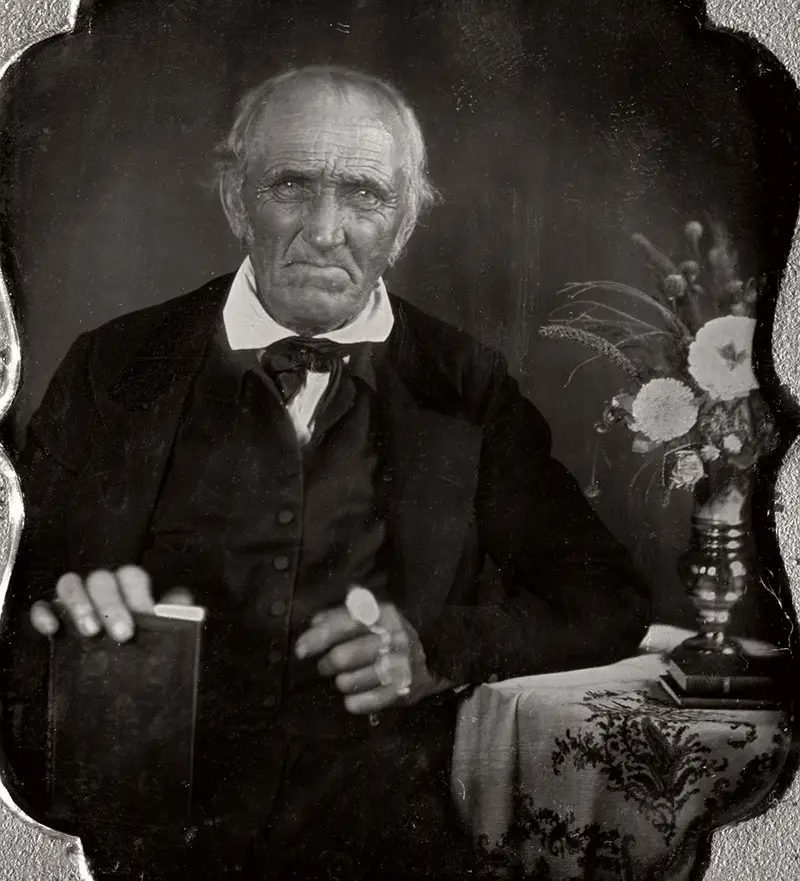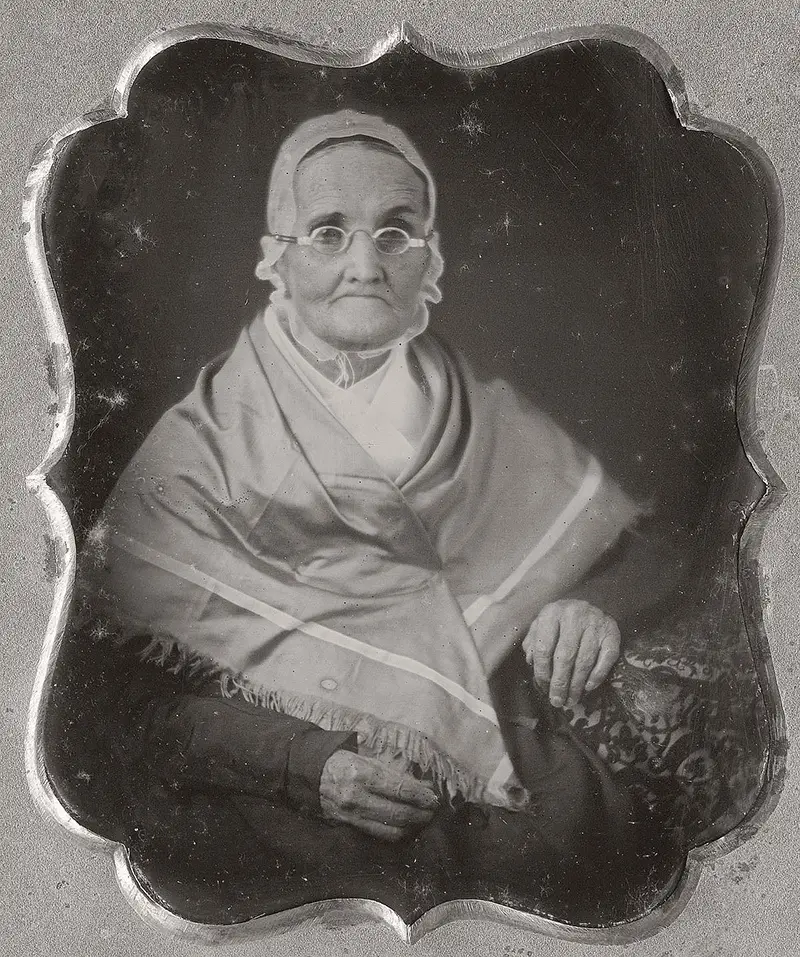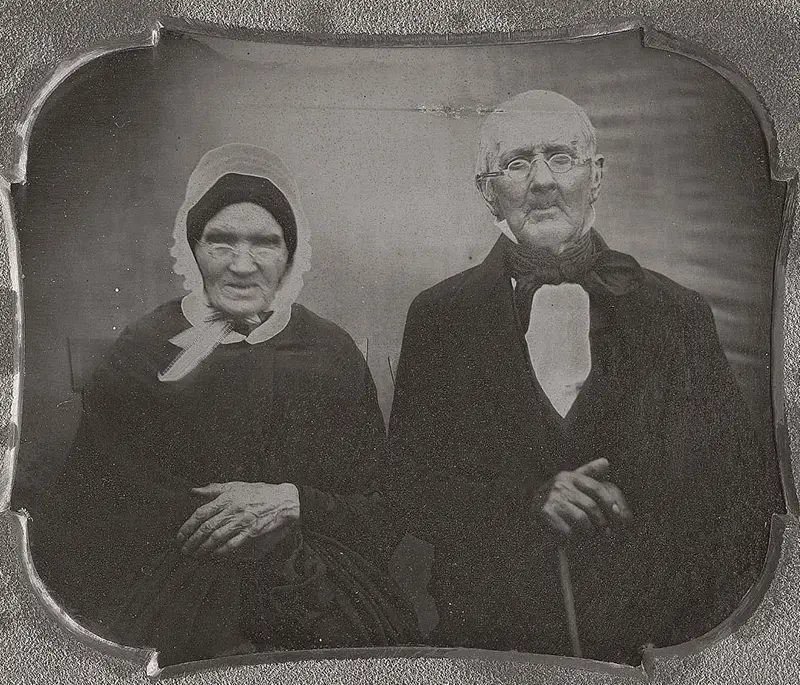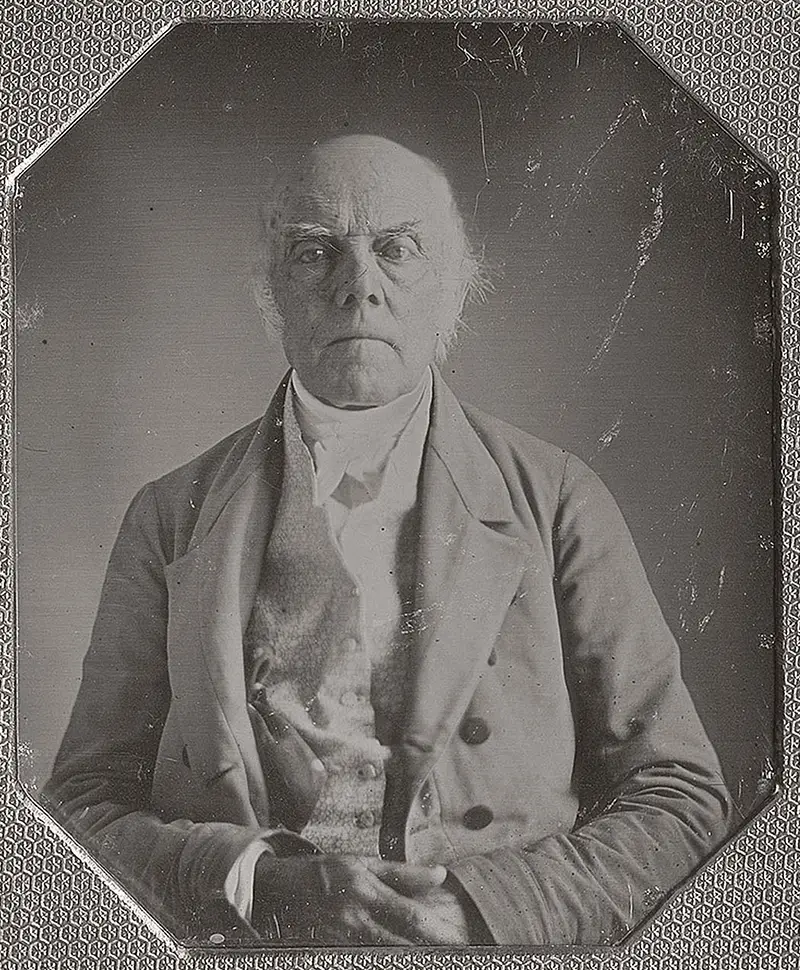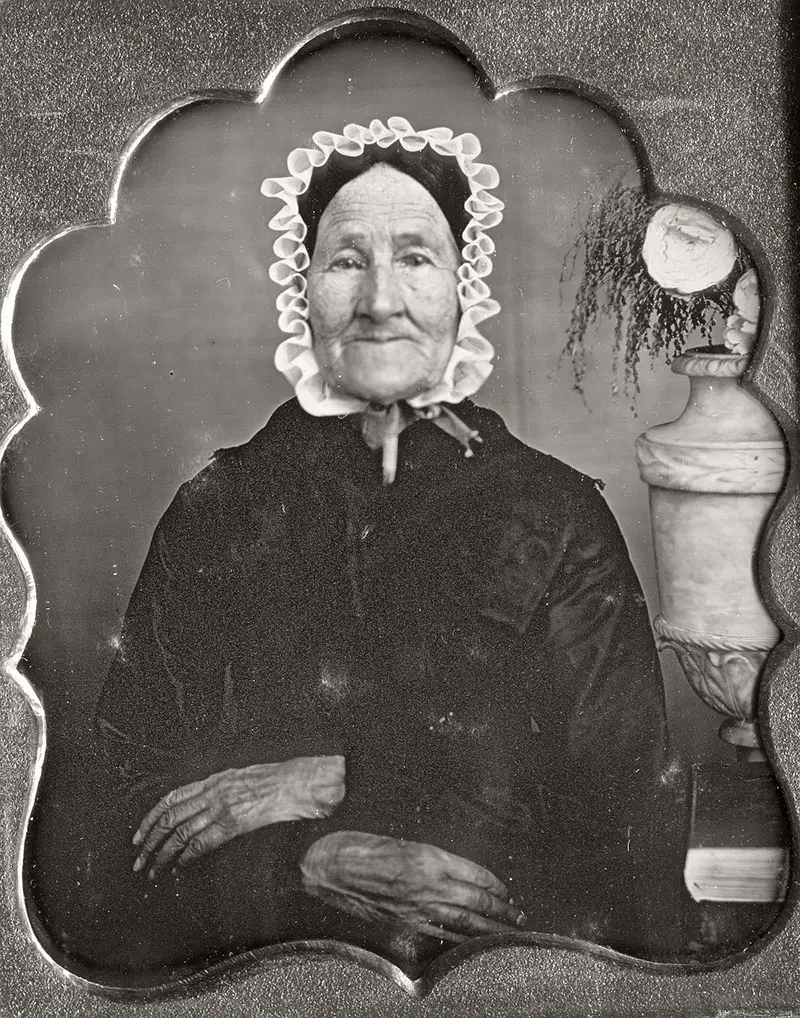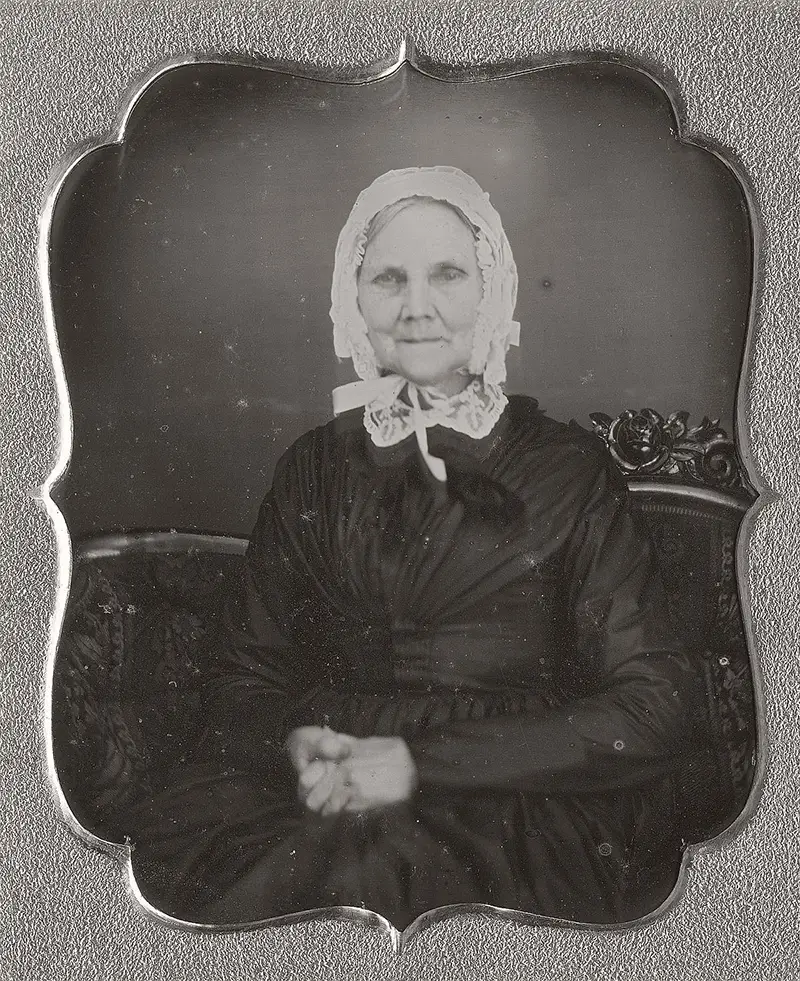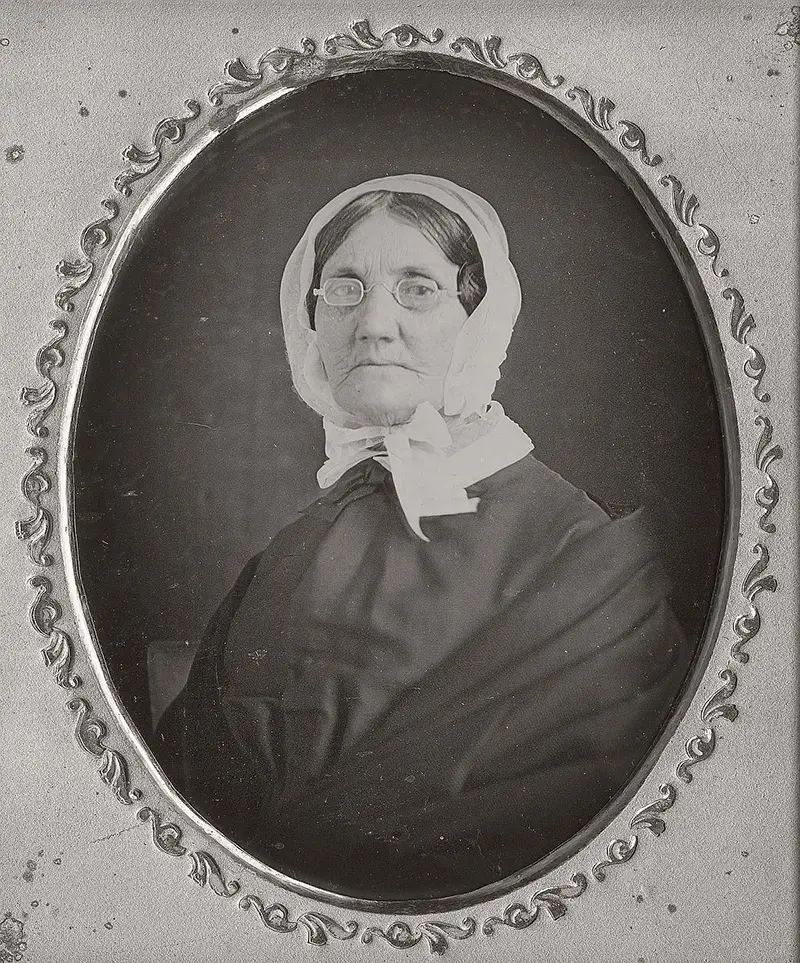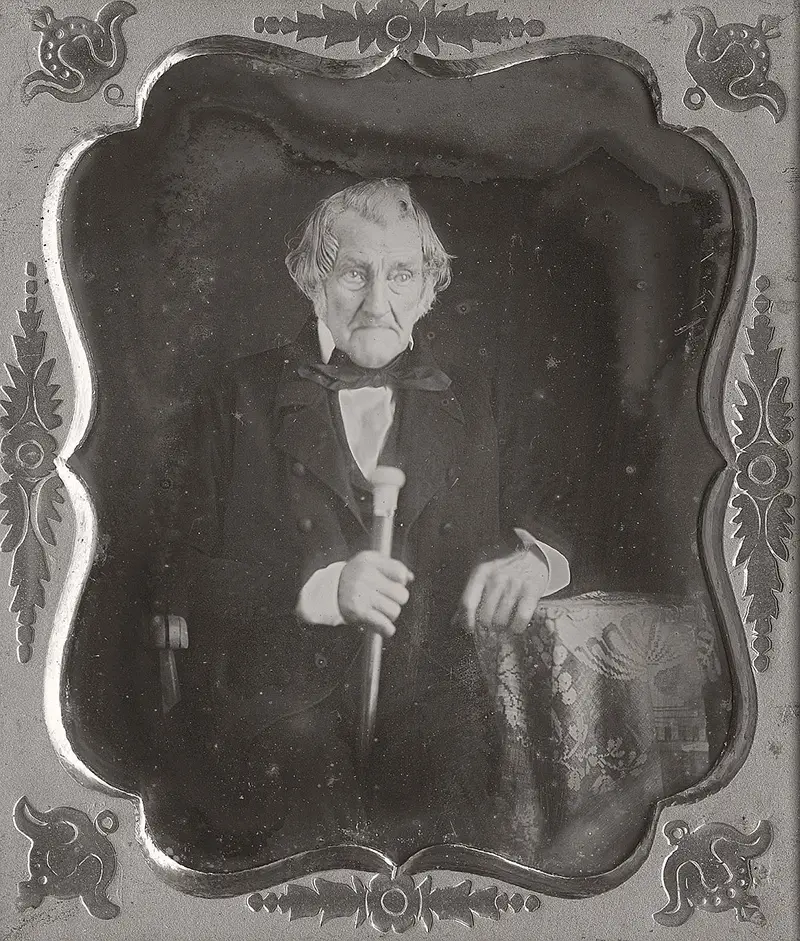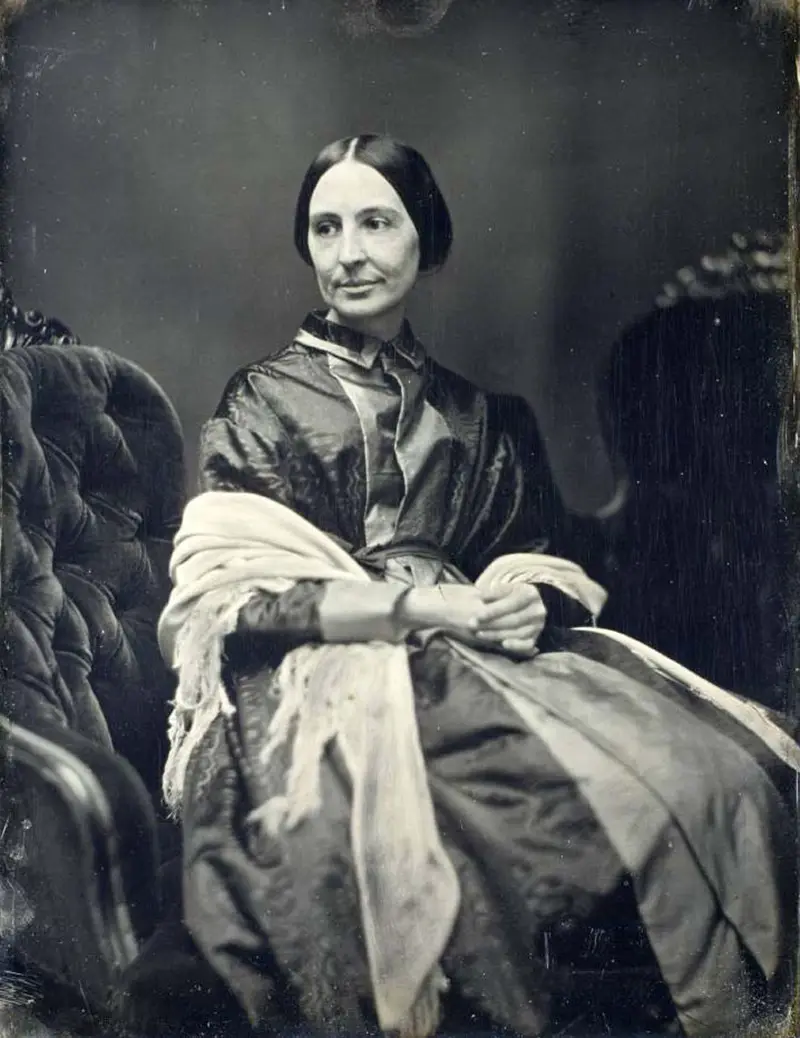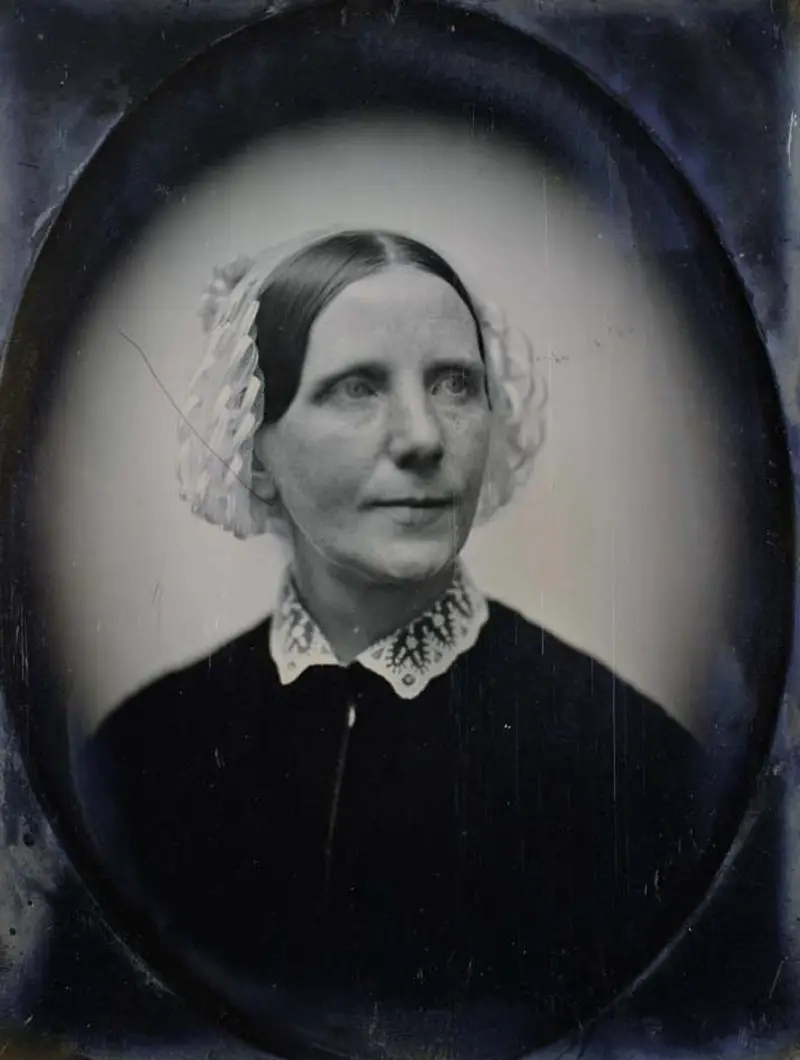
Photo taken in the 1840s.
The pictures in this collection are some of the earliest known portrait photographs to ever be taken. The subjects in the photos are older and no doubt wealthy, as photography was expensive and only accessible to those in a good financial position.
The incredible set of images, many of them taken by the legendary early American photographer Mathew Brady, show a selection of various portraits taken as daguerreotype images. Many of these people were born in the 1700s and some of them even lived through the American Revolutionary War.
Other portraits come without any accompanying documentation so it can be very difficult to identify the subject or the photographer.
The technique used to capture these images was called daguerreotype and it was the first publicly available photographic process; it was widely used during the 1840s and 1850s.

Nathaniel P. Banks was 36 years old when this picture was taken in 1852. He would later be a U.S. congressman, the governor of Massachusetts, and a Union Army general during the American Civil War.
To make the image, a daguerreotypist polished a sheet of silver-plated copper to a mirror finish; treated it with fumes that made its surface light-sensitive; exposed it in a camera for as long as was judged to be necessary, which could be as little as a few seconds for brightly sunlit subjects or much longer with less intense lighting.
Then the technician made the resulting latent image on it visible by fuming it with mercury vapor; removed its sensitivity to light by liquid chemical treatment; rinsed and dried it; and then sealed the easily marred result behind glass in a protective enclosure.
The image is on a mirror-like silver surface and will appear either positive or negative, depending on the angle at which it is viewed, how it is lit and whether a light or dark background is being reflected in the metal.
The darkest areas of the image are simply bare silver; lighter areas have a microscopically fine light-scattering texture. The surface is very delicate, and even the lightest wiping can permanently scuff it. Some tarnish around the edges is normal.
Several types of antique photographs, most often ambrotypes and tintypes, but sometimes even old prints on paper, are commonly misidentified as daguerreotypes, especially if they are in the small, ornamented cases in which daguerreotypes made in the US and the UK were usually housed.
The name “daguerreotype” correctly refers only to one very specific image type and medium, the product of a process that was in wide use only from the early 1840s to the late 1850s.
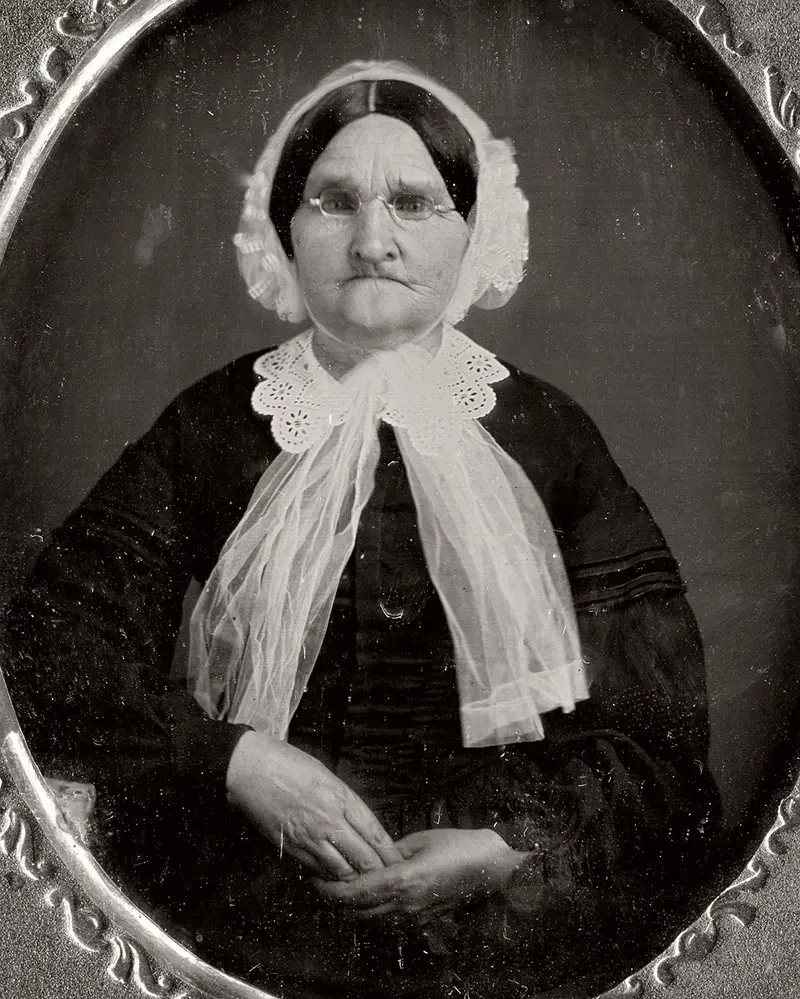
This unknown woman appears to have lost her teeth. Clamps were sometimes used to hold the subject’s face in position so the photographer could capture the best image

This elderly man is photographed holding a walking cane, circa 1850.

